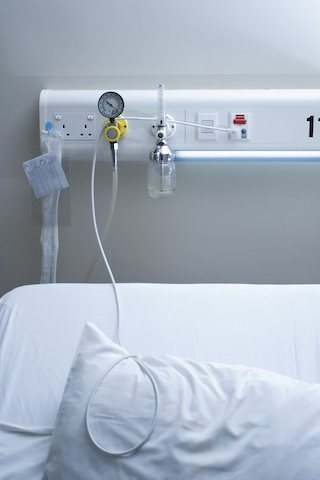Op-ed: Invest in emergency care for children
The following is an op-ed that originally appeared in the Winnipeg Free Press on July 25, 2017. It was written by Dr. Terry Klassen, head of the department of pediatrics and child health at the University of Manitoba and Leah Crockett, a knowledge broker for Translating Emergency Knowledge for Kids and the knowledge translation platform at the George & Fay Yee Centre for Healthcare Innovation.
 When a child is sick or injured, our health-care system usually delivers excellent care. That’s good news. Yet the adage that “children are not small adults” — and have specific medical needs — reflects the challenge still facing most Canadian emergency departments.
When a child is sick or injured, our health-care system usually delivers excellent care. That’s good news. Yet the adage that “children are not small adults” — and have specific medical needs — reflects the challenge still facing most Canadian emergency departments.
Each year in Canada, approximately 1.8 million acutely ill and injured children will visit an emergency department. What most Canadians don’t realize is that approximately eight in 10 of those kids will be cared for in a general emergency department with various levels of pediatric care expertise.
Why is this important? Recognizing red flags early and starting appropriate treatment can mean the difference between life and death for kids in emergency care. The unique medical needs of children present a special challenge for emergency care providers.
Some general emergency departments may not see many sick children, so when they do have to provide care for kids in medical crisis, some essential skills may not be second nature to non-pediatric specialists. Skills such as providing the right dosage of medication according to child weights or understanding age-appropriate vital signs are critical in an emergency setting.
Developing pediatric expertise in general emergency department settings can also be difficult because certain health conditions in children occur infrequently and accessing pediatric-specific training can be a challenge. As a result, caring for a very sick child is often the No. 1 discomfort for many general emergency department health-care professionals.
And keeping up on the latest evidence can be near to impossible.
These knowledge gaps are also costly.
According to research, failure to apply the best available evidence is widespread in pediatric health care, even for common conditions. Take, for example, croup and gastroenteritis. Simple and inexpensive medicines can reduce hospitalization rates by as much as 86 per cent and, thus, significantly reduce health-care costs. Yet, the recommended medications aren’t used as often as they should be, which means both the health of the child and the well-being of the health-care system are potentially jeopardized.
It has been estimated that routine administration of ondansetron to children with gastroenteritis, for example, would prevent 4,065 intravenous insertions and 1,003 hospitalizations annually — and would save the health-care system $1.18 million per year.
This also holds true for other conditions. A recent multi-centre study in Ontario found significant inter-hospital variation in the treatment of bronchiolitis, with many infants receiving tests or medications that had little evidence of benefit.
The level of emergency care for children varies widely across the country and sometimes the results can be devastating. In recent news, there has been a spate of misdiagnoses in Canadian emergency departments involving children. Unfortunately, such tragedies, while not common, are anything but new.
It’s been five years since two-month-old Drianna Ross of God’s Lake Narrows died of sepsis (blood infection) from an MRSA infection. For conditions such as sepsis, identifying red flags and starting treatment as soon as possible are critical, especially for those in remote settings where it may be a couple of hours before a child gets to a pediatric centre. But it’s not always easy for medical professionals without frequent exposure or specialty training to spot the red flags in children.
So what’s the solution?
A national program based in Manitoba is working to share the vast knowledge and evidence produced at children’s hospitals across the country with community hospitals and nursing stations, so that all children receive the same level of excellent care no matter where they live. Called Translating Emergency Knowledge for Kids (TREKK), the program focuses on providing current information on the recognition and treatment of the most serious conditions afflicting children.
TREKK creates both clinical tools that doctors and nurses can access when treating a patient, but also provides outreach sessions, simulation training and a network that better connects rural, remote and urban community hospitals to their closest children’s hospital.
But more can be done.
While a few dozen general emergency departments are using TREKK, there are about 1,400 other emergency facilities that could benefit from such resources — and aren’t. It is time for federal and provincial governments in Canada to invest in a knowledge infrastructure so that health-care providers can access TREKK at the point of care of acutely ill and injured kids. It’s time to scale up, in other words.
Are we ready to commit nationally to emergency care for children?






